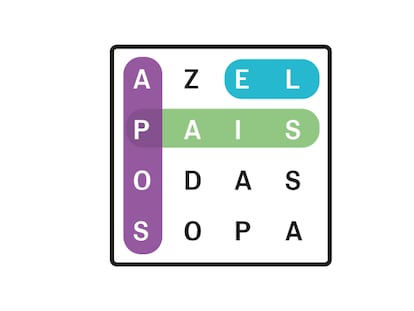Spain’s AVE high-speed rail network set for record expansion in 2015
New stations and more than 1,000 kilometers of track to open this election year

Spain’s 2015 budget is once again allocating more money to infrastructure after a prolonged slump, and there is one clear beneficiary: high-speed rail.
Around 1,000 kilometers of new track is set to open this year, expanding the current network by a third, according to government calculations.
The AVE is due to reach eight further provincial capitals, including Zamora, León, Palencia and Burgos
The AVE train is due to reach eight further provincial capitals, including Zamora, León, Palencia and Burgos, and connect all the main cities in Galicia. On the east coast, new links will unite Valencia and Castellón, and Alicante and Murcia. In the south, the Seville line will stretch all the way down to Cádiz with a stop in Granada.
The unprecedented expansion, which coincides with an election year, will cost €3.5 billion, a 48 percent rise on the amount allocated to high-speed rail in 2014. Of this sum, €285 million will be subsidized by the EU.
Some of Spain’s European partners, including Germany, are criticizing what they view as its excessive expenditure on high-speed rail, noting that many of the existing 31 stations do not receive significant traffic.
The AVE rail system, whose trains reach speeds of up to 300 km/h, was inaugurated in 1992 and has made Spain a leading provider of fast-rail services in the world. Spanish companies recently won the bid to build a high-speed train in Saudi Arabia, the largest contract of its kind in the world, and Spanish businesses are also vying to participate in a project to build the United States’ first high-speed railroad in California.
Tu suscripción se está usando en otro dispositivo
¿Quieres añadir otro usuario a tu suscripción?
Si continúas leyendo en este dispositivo, no se podrá leer en el otro.
FlechaTu suscripción se está usando en otro dispositivo y solo puedes acceder a EL PAÍS desde un dispositivo a la vez.
Si quieres compartir tu cuenta, cambia tu suscripción a la modalidad Premium, así podrás añadir otro usuario. Cada uno accederá con su propia cuenta de email, lo que os permitirá personalizar vuestra experiencia en EL PAÍS.
¿Tienes una suscripción de empresa? Accede aquí para contratar más cuentas.
En el caso de no saber quién está usando tu cuenta, te recomendamos cambiar tu contraseña aquí.
Si decides continuar compartiendo tu cuenta, este mensaje se mostrará en tu dispositivo y en el de la otra persona que está usando tu cuenta de forma indefinida, afectando a tu experiencia de lectura. Puedes consultar aquí los términos y condiciones de la suscripción digital.
Últimas noticias
The complicated life of Francesca Albanese: A rising figure in Italy but barred from every bank by Trump’s sanctions
How Japan is trying to avert ‘digital defeat’
Half of Scotland is in the hands of 420 property owners
Reinhard Genzel, Nobel laureate in physics: ‘One-minute videos will never give you the truth’
Most viewed
- Pablo Escobar’s hippos: A serious environmental problem, 40 years on
- Reinhard Genzel, Nobel laureate in physics: ‘One-minute videos will never give you the truth’
- Why we lost the habit of sleeping in two segments and how that changed our sense of time
- Charles Dubouloz, mountaineering star, retires at 36 with a farewell tour inspired by Walter Bonatti
- The Florida Keys tourist paradise is besieged by immigration agents: ‘We’ve never seen anything like this’









































